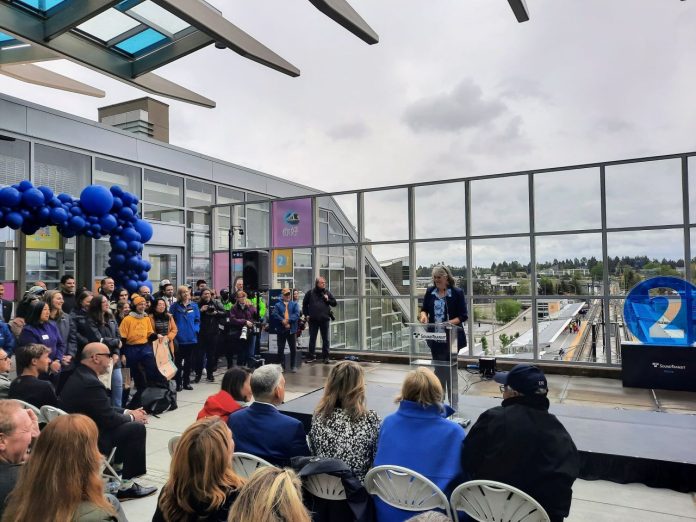
The 2 Line clocked 35,000 boardings on opening day according to Sound Transit’s estimate.
Sound Transit cut the ribbon on its brand new East Link light rail line at 11:30am Saturday and crush loads of passengers poured into the system to get their first ride. Sound Transit’s second line, dubbed the 2 Line, arrived later than anticipated and in an abbreviated form without the tracks yet open across Lake Washington to Mercer Island and Seattle — where it will eventually share track with the 1 Line as far north as Lynnwood — due to construction issues.
Nonetheless, the eight-station starter line that opened this weekend was warmly greeted and heralded as transformative by leading officials from across the region.
“This light rail line is going to change lives,” said King County Councilmember and Sound Transit System Expansion Committee Chair Claudia Balducci. “It will connect people to education, jobs, recreation, and each other, helping expand access to opportunity across our region. For me, this is the culmination of years and years of work by many people and a realization of the promise we made to voters in 2008. For the Eastside, it’s the beginning of an incredible transformation that will benefit the community for decades to come.”
Sound Transit board chair and King County Executive Dow Constantine concurred and in his statement noted that Lynnwood Link’s opening wouldn’t be far behind, as the agency recently announced an August 30 opening for the 1 Line’s northern expansion.
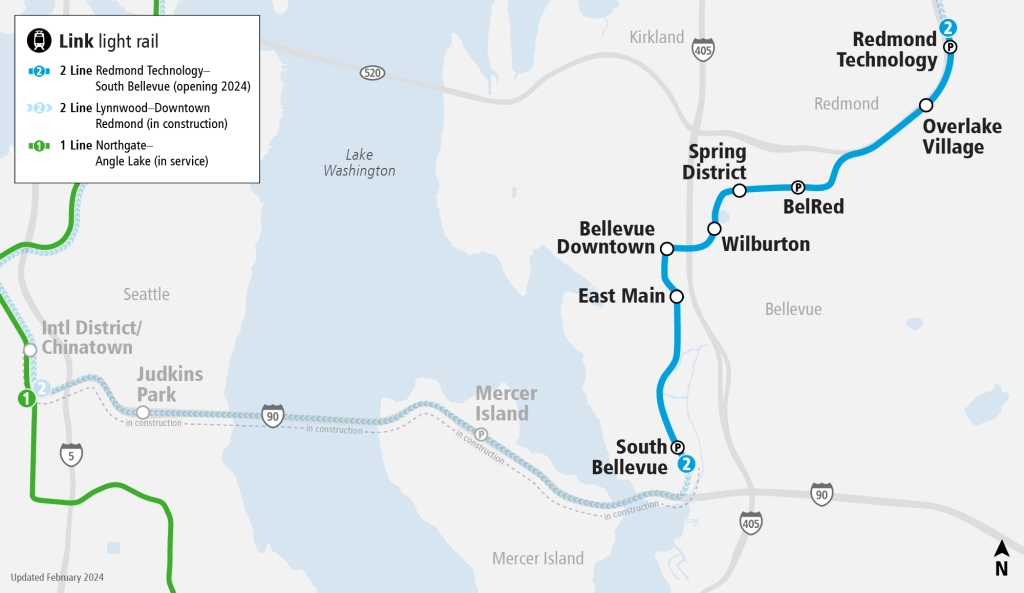
“This is a historic occasion for our region and the hundreds of thousands of people on the Eastside who will be able to use Link light rail to quickly and safely get to school, work, games, concerts, and more, without the hassles of traffic and parking,” Constantine said. “We are well on our way to a more connected Puget Sound region with the 1 Line extension to Lynnwood opening in August, and the 2 Line further expanding next year.”
The glass-ceilinged atrium of Downtown Bellevue Station was filled to the brim with transit fans and local officials for the opening ceremony — 500 or more crowded in to mark the occasion. While Sound Transit was hoping to wrap its speaking program and board the first train to run at 11:02am, the agency was about 30 minutes behind schedule as they got a late start and several speeches seemed to run long.
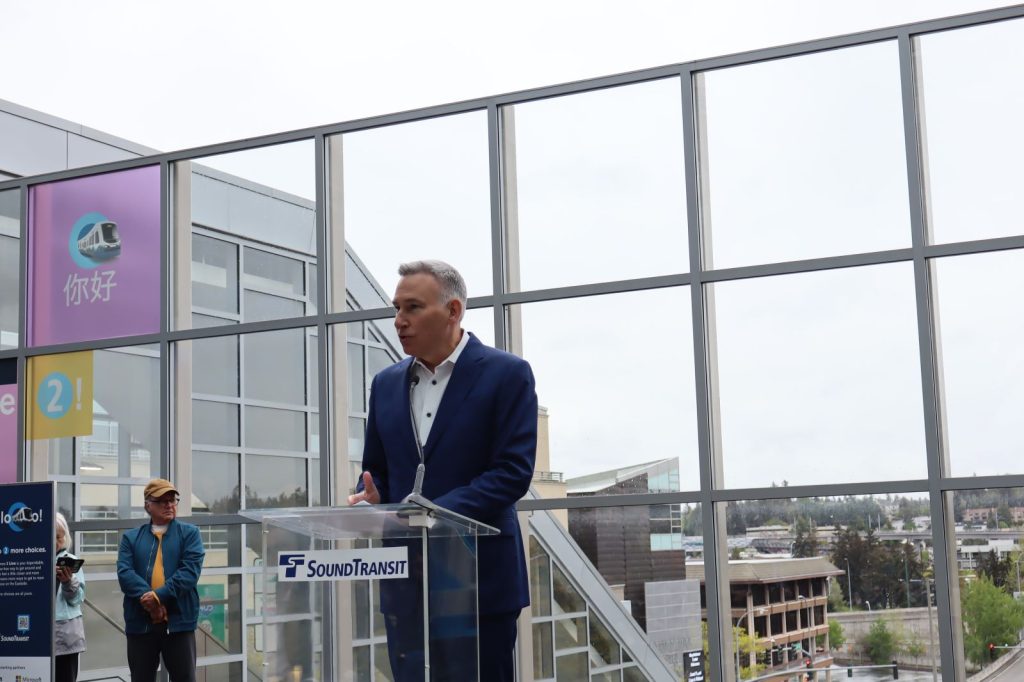
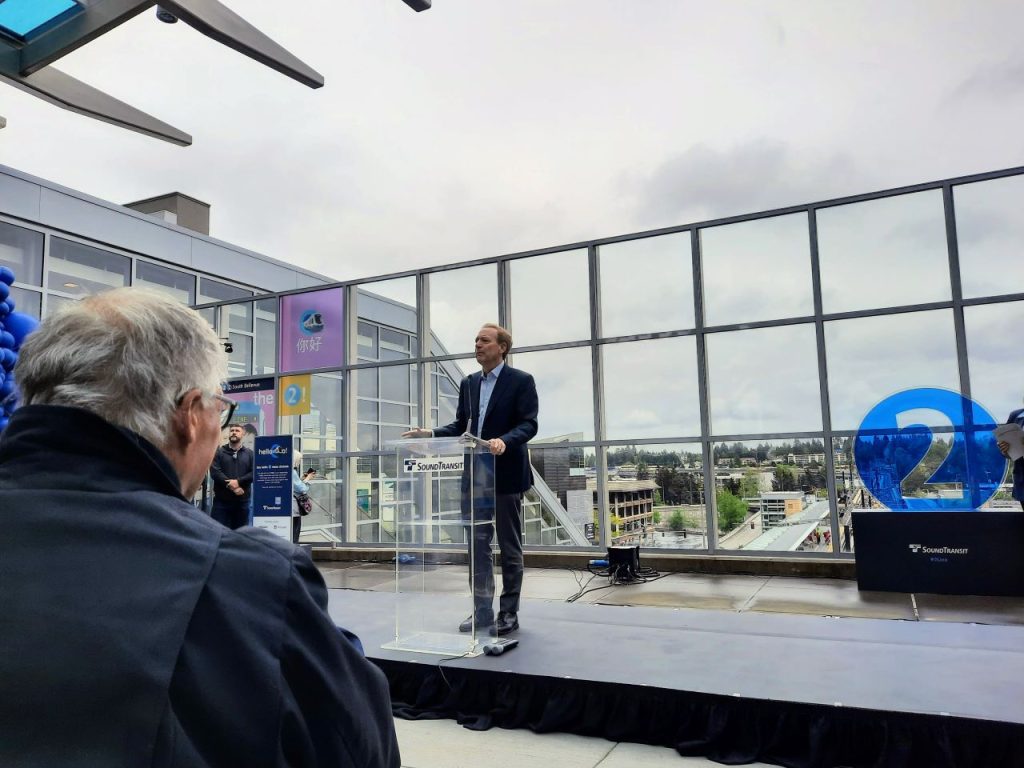
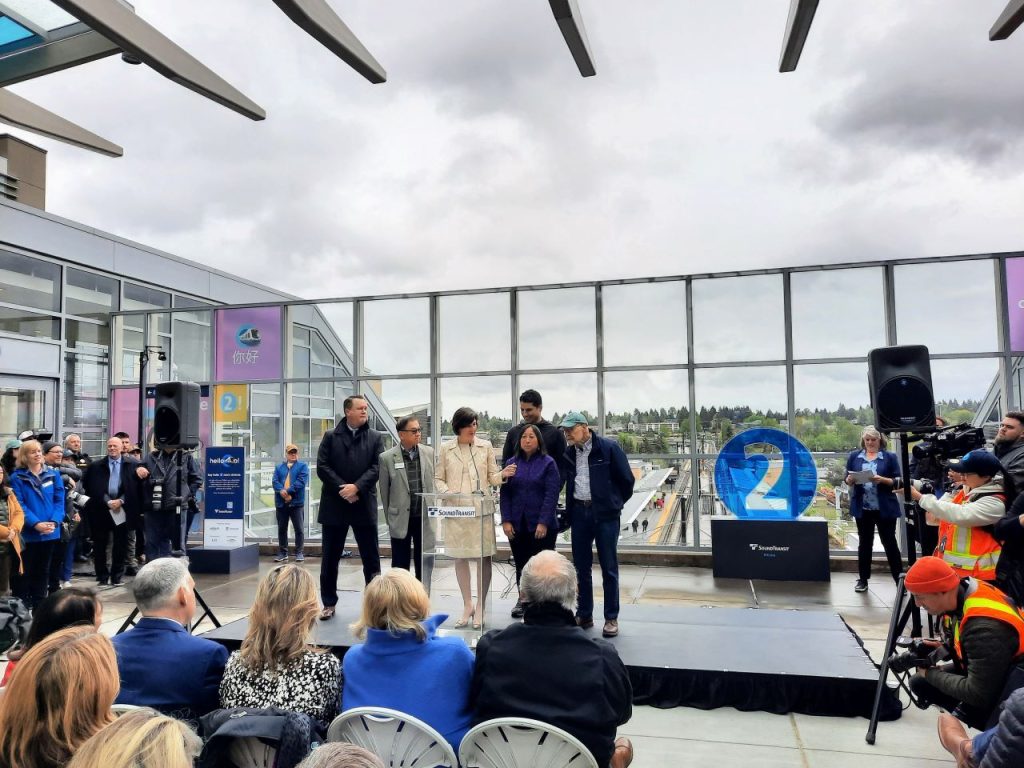
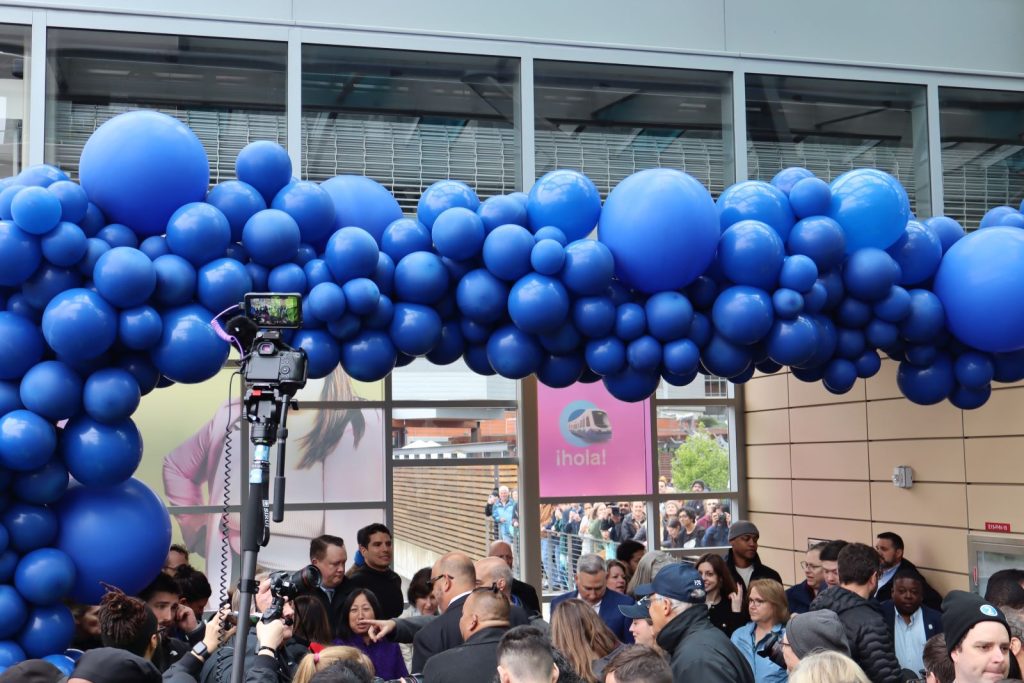
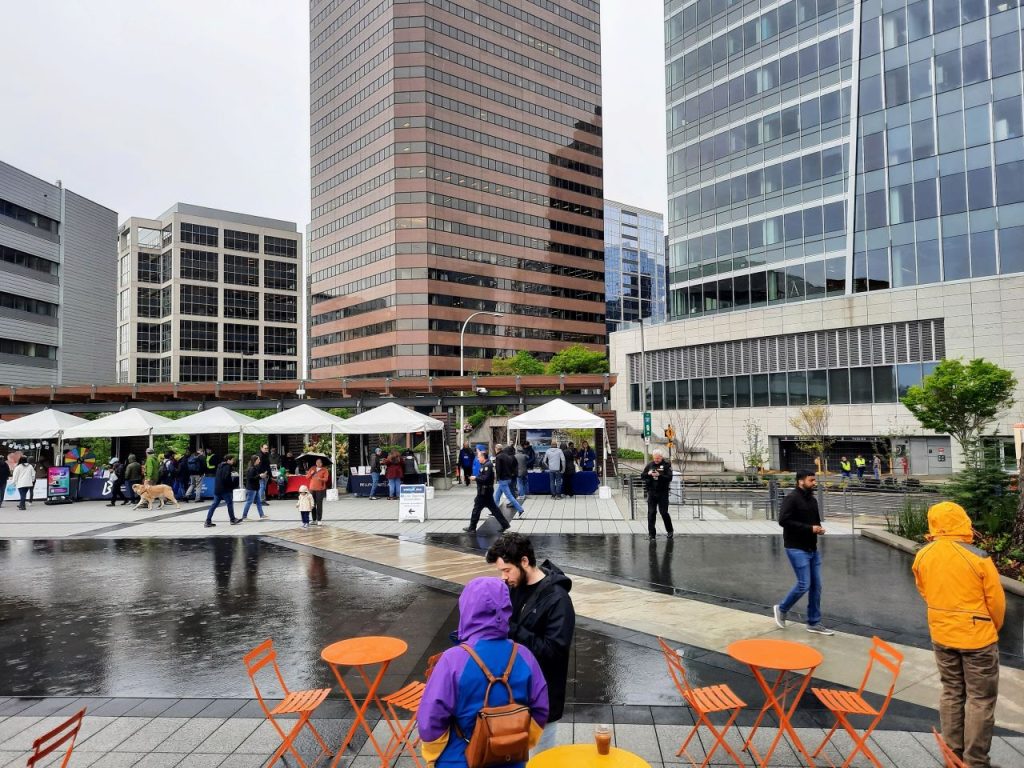
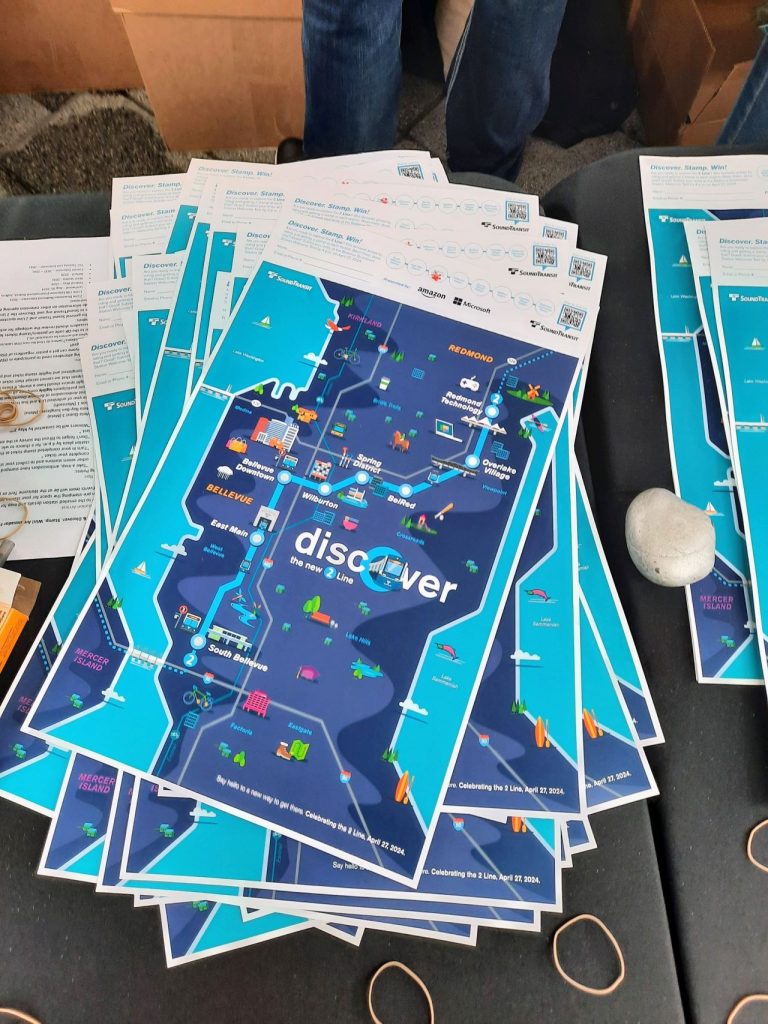
This might have soured the experience a bit for the first wave of transit riders, especially those gathered at other stations around the 2 Line system without the entertainment the speeches were offering. With the agency running two-car trains on the starter line, platform crowds took a bit longer to clear compared to the mostly four-car trains running on the 1 Line through Seattle. But eventually the trains did arrive and riders got their chance to explore the system. Sound Transit hosted a “collect a stamp from every station” challenge encouraging riders to explore each station area, where tents and activities had been prepared outside the stations.
This a region that is pretty excited about light rail expansion. #2Line trains start running at 11am after the ribbon cutting hoopla. pic.twitter.com/ZDGkX1ZcnT
— The Urbanist (@UrbanistOrg) April 27, 2024
Constantine noted the importance of taking a moment to celebrate the hard work that it took to deliver a project as large and challenged as a major light rail project — East Link first broke ground back in 2016.
“But the thing about these ribbon cuttings is that we look around and say: ‘My goodness, we realize that we set out to do something extraordinary together. And we got it done. We did it.’ That’s what today is about,” Constantine said in his speech. “So we’re going to take another one of those pictures and add to that photo album in just a bit.”
The first trains are pulling into the station. #EastLink pic.twitter.com/cF4VNKtIEc
— The Urbanist (@UrbanistOrg) April 27, 2024
The challenges were many for East Link, with well-heeled residents in both Mercer Island and Bellevue organizing lawsuits to block or delay the project. In Bellevue’s case, real estate mogul Kemper Freeman sued even after winning a concession that forced the routing closer to I-405 and farther from the heart of Downtown Bellevue and his Bellevue Square Mall, the crown jewel of his real estate empire. The Urbanist recounted some of this routing saga in our East Link opening preview article, so check that out for more.
The construction defects on the I-90 track segments were also a huge setback on a project that appeared on course for its targeted 2023 opening up until that point. Not being able to cross Lake Washington will create operational snags for Sound Transit to operate the 1 Line as it expands since the agency had been counting on access to its new Bellevue train base to store and maintain its fleet.
Undaunted, Balducci led the charge to open the Eastside segment as a starter line while repairs continue along I-90, and her argument — and agency problem solving to address the obstacles and operational challenges — won the day.
“In August 2023 the Sound Transit Board authorized the opening of the initial segment of the 2 Line on the Eastside while construction to correct quality issues on the I-90 segment continues,” Sound Transit noted in its release. “Since last February, trains have been running simulated service between South Bellevue and Redmond Technology Station, during which all Link trains run a normal schedule without passengers.”
Sound Transit expects about 6,000 daily riders on the starter line, but the agency has projected about 50,000 daily boardings on the 2 Line by 2030, by which time it will be extended to Seattle and Lynnwood and to Downtown Redmond.
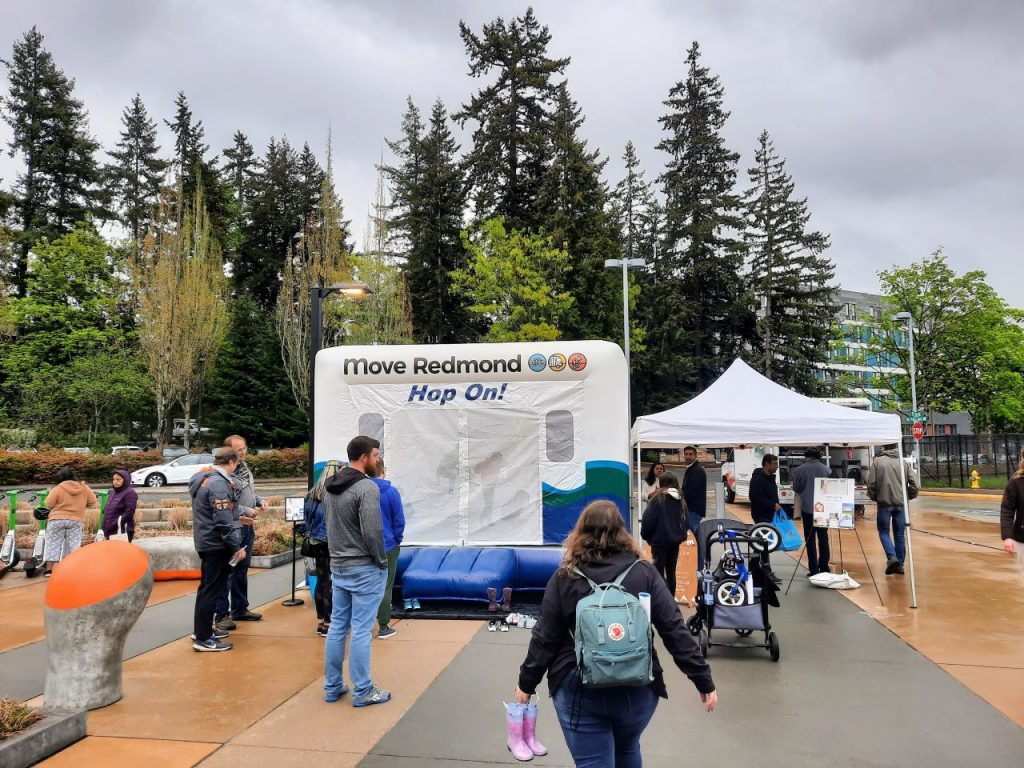
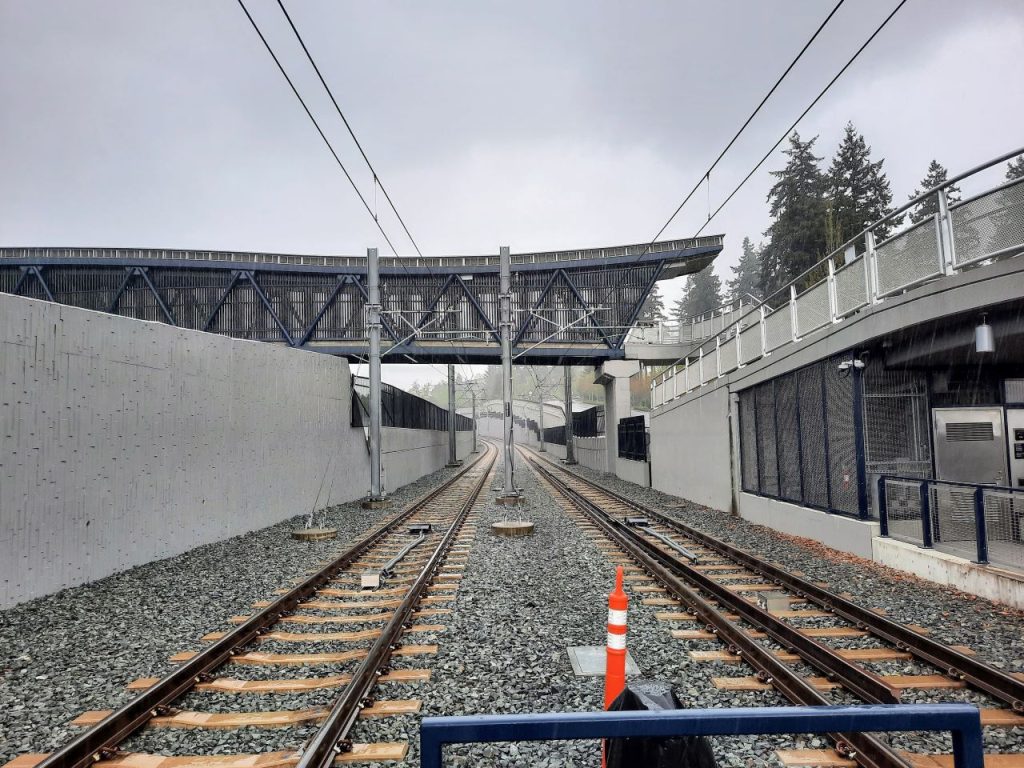
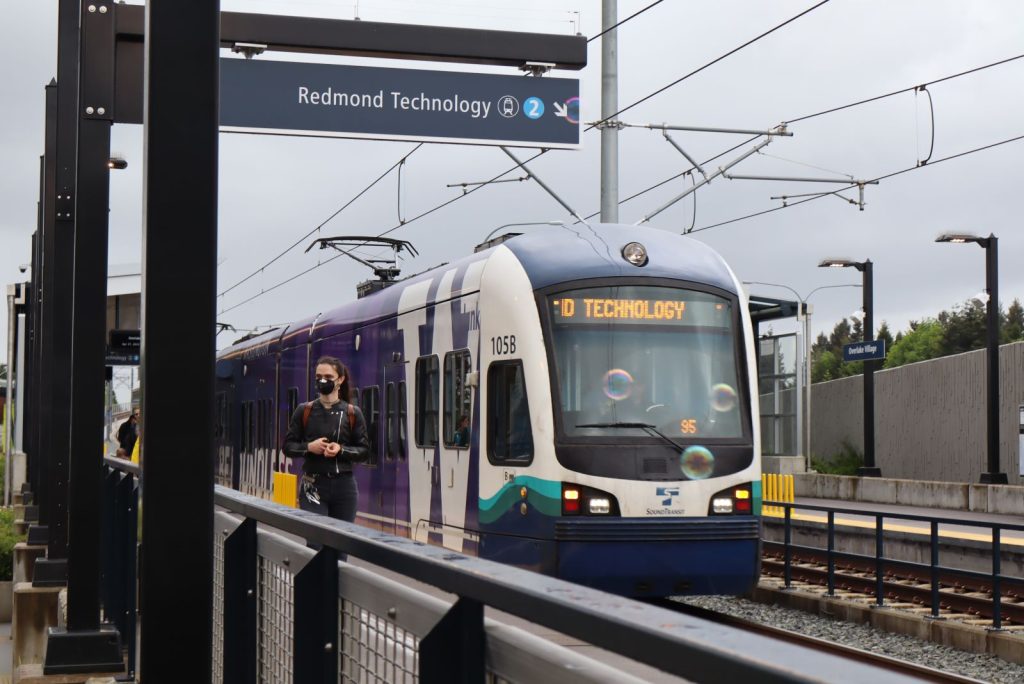
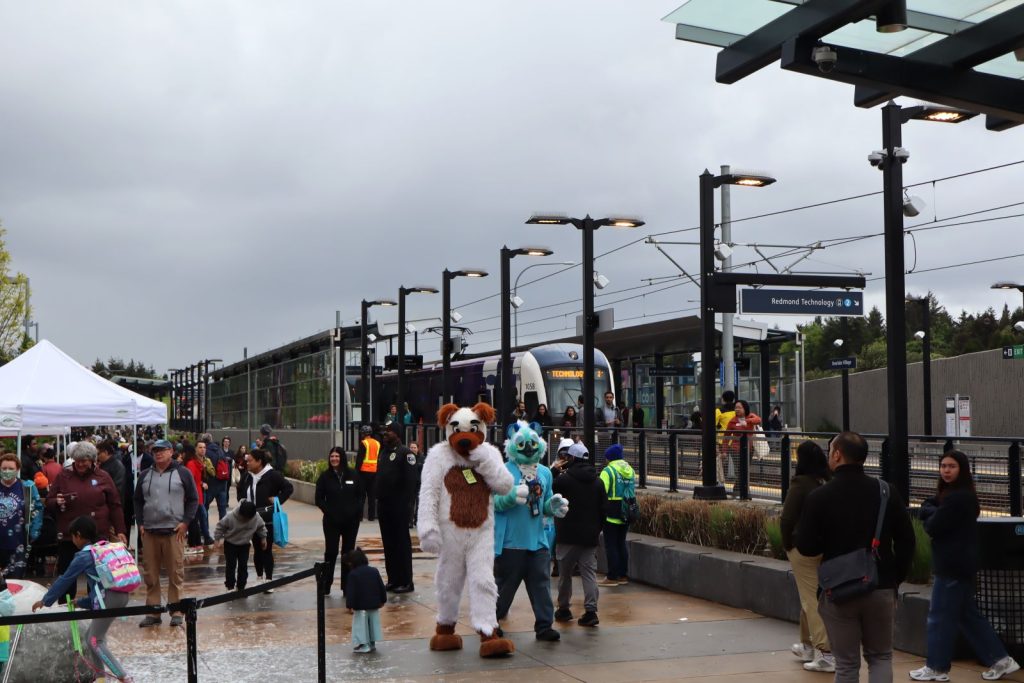
Several officials acknowledged the importance of adding housing and celebrated the redevelopment that light rail had spurred. Sounding like an urbanist, Redmond Mayor Angela Birney proudly declared Redmond had transformed from a suburb to a city with the catalyst the light rail provided.
“As you ride today, look around at the changes along the line,” Birney said. “Yes, light rail is a sustainable transportation option, but it is so much more. It improves neighborhood livability by bringing transit-oriented development and improved connections to housing, jobs, businesses, and parks. The 2 Line has been the catalyst in transforming Redmond from a suburb to a city.”
While Bellevue Mayor Lynne Robinson did not stress urbanization and leaving suburban mindsets behind quite as much as Birney, she did echo similar themes and point to the importance of encouraging development near stations and promoting environmental sustainability, which car-oriented development fails to offer.
“Light rail is a generational leap ahead in Bellevue’s ability to provide multimodal regional transportation choices. It will knit our communities together, and it will sustain us as our city grows in our population and our economy,” Robinson said “[2 Line] service that will expand access to the Eastside, support our community’s efforts, commitment to sustainability and affordable housing, foster development and transit-oriented communities and attract new businesses and amenities to the city. And look at what just the promise of light rail was brought to us today.”
The Urbanist has covered the transit-oriented development efforts in a five-part series focused on the fast-growing station areas.
- Downtown Bellevue – 13,000+ homes built or in the development pipeline, plus 16 million square feet of office space.
- The Spring District – 2,000+ homes, 4 million square feet of office.
- BelRed – 3,500+ new homes built or permitted since 2017.
- Overlake – 8,000+ homes built or permitted in the past decade.
- Redmond Technology Center – 214 homes and 3 million square feet of office space in the Microsoft Campus Refresh.
Development around South Bellevue Station has been pretty non-existent as it’s bordered by Mercer Slough and single family zoning. East Main and Wilburton has seen pretty limited growth so far, but that could change with Bellevue’s zoning overhaul slated with its Comprehensive Plan update. Wary of pushback, Bellevue has shelved most of the “Bike Bellevue” network it had planned to roll out as part of an effort to make it easier to get to new light rail stations and promote safety and accessibility in the neighborhoods springing up around them.
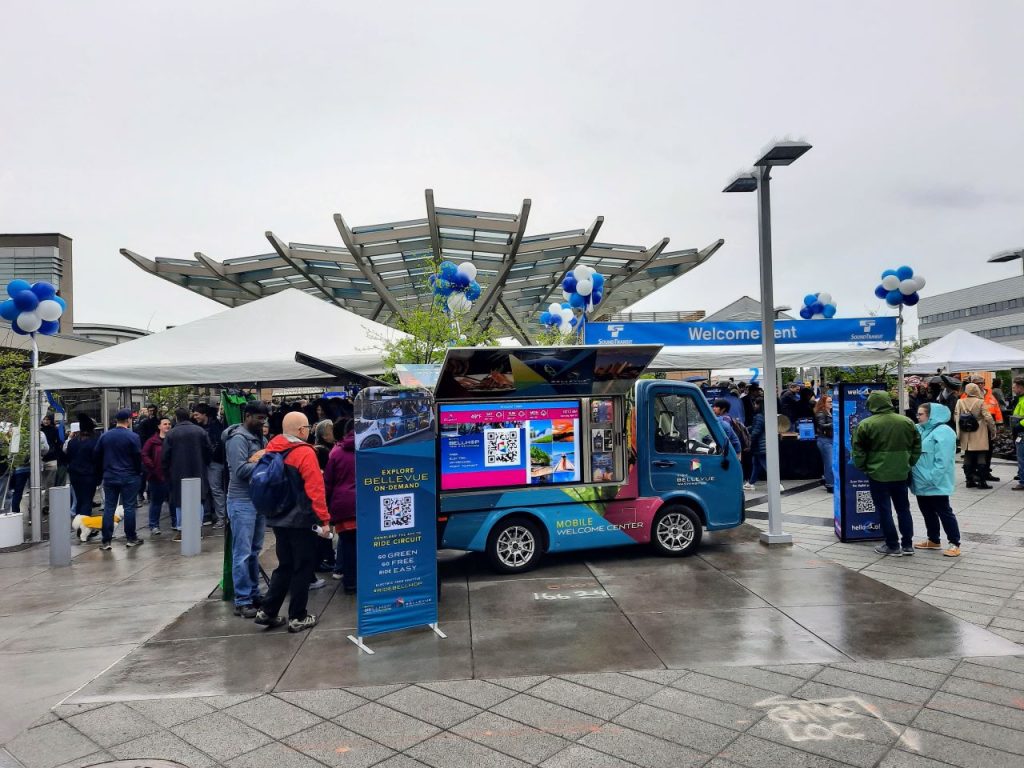
In their speeches, U.S. Senators Patty Murray and Maria Cantwell noted the importance of transit-oriented development and affordable housing investments along the line in their speeches. Both also noted their tireless efforts to bring federal support to the project, with grants and low-interest loans via the Transportation Infrastructure Finance and Innovation Act (TIFIA) program covering a big portion of the $3.7 billion project.
In contrast, Governor Jay Inslee noted the state didn’t bring a dime to the project directly, but he did stress the importance of the Climate Commitment Act, which he signed into law in 2021, in providing transportation improvements that help riders get to and from the stations.
“This line is an artery of a transportation system, but we need capillaries. We need to be able to get people to this line so they can enjoy it. We need buses; we need bikes; we need sidewalks,” Inslee said. “Thank God that we have our state’s Climate Commitment Act that is committing $400 million so we can have bikes and sidewalks and free bus rides so we can get to this project.”
Some states do fund rapid transit projects directly, but for the Washington State Legislature that has been taboo for some reason.
— The Urbanist (@UrbanistOrg) April 27, 2024
In fact, Inslee turned his speech into a bit of a rally to save the Climate Commitment Act, which is under threat from a state ballot initiative seeking to repeal it, which was funded by a rich conservative hedge fund manager named Brian Heywood.
“And we are going to keep the Climate Commitment on track so people can get free bus rides if you’re 18 [or under] to get to this station,” Inslee said. “So the Climate Commitment Act can get you a sidewalk to get to this station. And so we can help buses get to be electrified so they don’t pollute.”
Passage of the ballot measure this fall would certainly put a wrench in plans to improve transit access statewide, taking winds out of the sails of efforts to improve connectivity and curb climate pollution.
But for now, transit marches on, with the Lynnwood Link Extension of the 1 Line on August 30, and Federal Way Link Extension in 2026. The 2 Line will extend to downtown Redmond in 2025, and, if all goes according to plan, cross the lake and bring Mercer Island Station and Seattle’s Judkins Park Station online. Until then, 2 Line riders will have the eight stations of the starter line to enjoy.
This article was updated at 4:21pm Wednesday with ridership figures.
Doug Trumm is publisher of The Urbanist. An Urbanist writer since 2015, he dreams of pedestrianizing streets, blanketing the city in bus lanes, and unleashing a mass timber building spree to end the affordable housing shortage and avert our coming climate catastrophe. He graduated from the Evans School of Public Policy and Governance at the University of Washington in 2019. He lives in East Fremont and loves to explore the city on his bike.


